Discovering your personal style can be a process that is hard to describe. Even a little mysterious. As an example, before we became full-time RVers, we once searched for hours to find the perfect couch for our new apartment. Nothing inspired either of us until we stumbled upon a futon with a colorful abstract pattern. It reminded us of ice tinkling in a highball cocktail glass. It immediately spoke to both of us — for reasons neither of us could quite articulate. Similarly, we reached decisions the same way when we bought our house. And our cars. And — you guessed it — our full-time vintage camper. What was it about the vintage camper style that drew our attention? Taste.
When we first saw on the “canned ham,” mid-century camper that’s become our rolling home since 2012, we just felt it was right. We were attracted by the cozy all-wood interior and unpainted aluminum exterior — not to mention the smiles it brought to our faces. (Some tell us we look like a postcard rolling down the road.) When we saw it, we knew it: That was our vintage camper style.
But if you’re at the beginning of your journey, you might ask, “How do I figure out my vintage camper style? Where do I even start?”
From recognizing personal taste to brushing up on am little vintage camper know-how, we’ll git you a jump start into age-old adventure.
Vintage Camper Style Starts with Personal Taste
Personal taste is, of course, personal — even if you’re lucky enough to share a style vibe with your partner. One person’s fashion faux pas is another person’s carefully curated statement. While I really wanted to paint big, bright, hippie flowers all over the aluminum siding, we compromised with a bright purple door and flaming red trim and colorful, floral interior. And of course, RVs are no different. While we might argue that today’s models answer our modern needs, really, aren’t we just buying into what is fashionable according to our own style?
Finding a vintage camper style that suits you sounds like a simple matter, but with so many directions to go, where do you begin? The research could lead you on such a deep dive that you may never come up for air long enough to purchase your dream project. We can’t say that we haven’t warned you. (After all, we did tell you everything you want to consider before you restore a vintage camper.)
A Very Quick History of the Modern Vintage
At the turn of the 20th century, automobiles started rumbling across the streets and back-roads of our country. Not too long into the second decade, one-of-a-kind camper vans (precursors to modern motorhomes) began popping up to combine the freedom of travel along with the comfort of living and sleeping along the way. Even with incomes rising prior to the late 1920s, most middle-class families couldn’t afford both a vehicle for everyday life and another to take on vacation. As a result, the detachable travel trailer proliferated and still makes up the largest section of the RV industry today.
While many manufacturers began cranking out standardized versions, the hey-day of what we now consider the “vintage camper” came after the end of WWII. With the post-war economic boom and manufacturing processes well established to meet demand, aluminum-sided, lightweight, and affordable travel trailers took to the highways for their much longed for vacation. And the golden age of the American road trip took off down Route 66!
What’s in a Name: Vintage Camper Lingo
If you’re just starting the journey to find your vintage camper style, you might think a lot of terms are synonymous. Retro and vintage. Classic and antique. Aren’t they the same thing. No, no, no. Each term is a specific reference.
So, let’s get you smart — quick. Here are some of the accepted definitions for older or older looking RVs:
Retro
New construction designed to look old — often has modern appliances and technology but designed to resemble the older models. Interior materials include wood, wood paneling, plastic, and modern composite materials. Most commonly, these will mimic the “canned ham” style travel trailer. Exterior is often painted or coated during the manufacturing process.
Classic
More than 20 years old, with a wide array of styles. Materials include plastic, plastic laminate, wood paneling, vinyl, and some modern composite materials. Most of these offer manufactured painted siding to prevent (or slow down) the oxidation of aluminum.
Vintage
Made from 1946 to 1969, these babies are the very essence of mid-century modern. If you like the style depicted in “The Incredibles” movies, this is your jam. Materials include real wood interiors, with some Formica countertops, with aluminum trim pieces and appliances, and vinyl flooring. Ice boxes and gas lanterns were still being used. Aluminum siding can be painted, or unpainted which can lead to a dull appearance over time due to oxidation. However, these can be restored to their original shine with some elbow grease and the right polishing compound.
Antique
Beginning in 1945 (or earlier), there’s lots of variation in these early models but most offer all wood interiors with cast iron cooking and heating appliances, gas lanterns, and ice boxes rather than electrical refrigeration. Exteriors come in all kinds of materials including treated leather, wood, or aluminum.
Common Shapes that Define the Vintage Look
Canned Ham
Harkening back to the cured pork product from the ’50s, this style is streamlined front to back with vertical sides that are high enough to facilitate standing up inside. These are usually single axle trailers. Typical floorplans include a banquet that could be converted to a sleeping space, and a full-time bed or convertible couch/sleeping area. They often define the “happy camper” image marketed on everything from pillows to mugs.
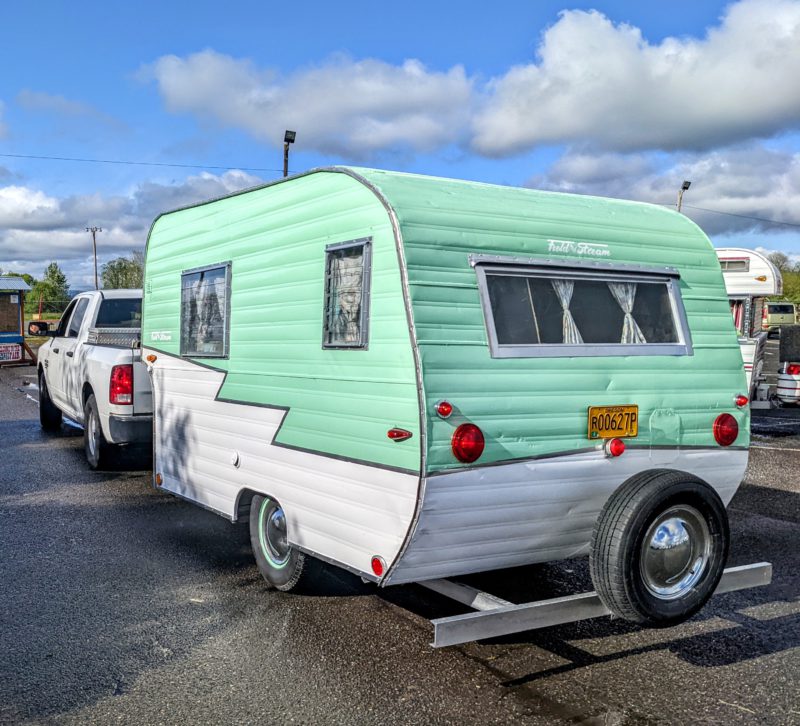
Teardrop
These small streamlined, single-axle towables offer inside sleeping areas and some storage, but they are typically not tall enough to facilitate standing. The kitchen area is accessed through a hatch on the outside of the camper, where the teardrop shape comes to a point.
Bread Loaf
Squarish with vertical sides but with rounded corners, these can range in length from less than 20 feet with a single axle to over 40 feet “park models.”
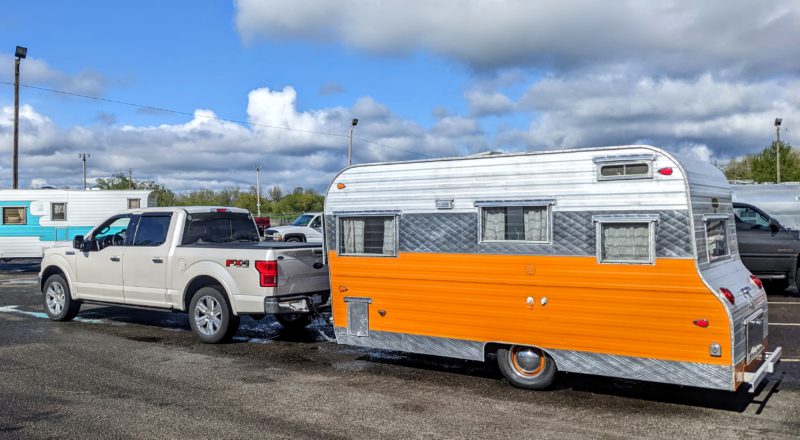
Over Bumper
These are variations of the canned ham or bread loaf styles that offer a sleeping or storage area that pops out above the trailer tongue like a small fifth wheel, adding some sleeping/storage space to the standard interior layout.
Aircraft/Streamlined
More tubular than square, these aerodynamic towables are often the very image of what folks imagine when they conjure up an image of a vintage camper.
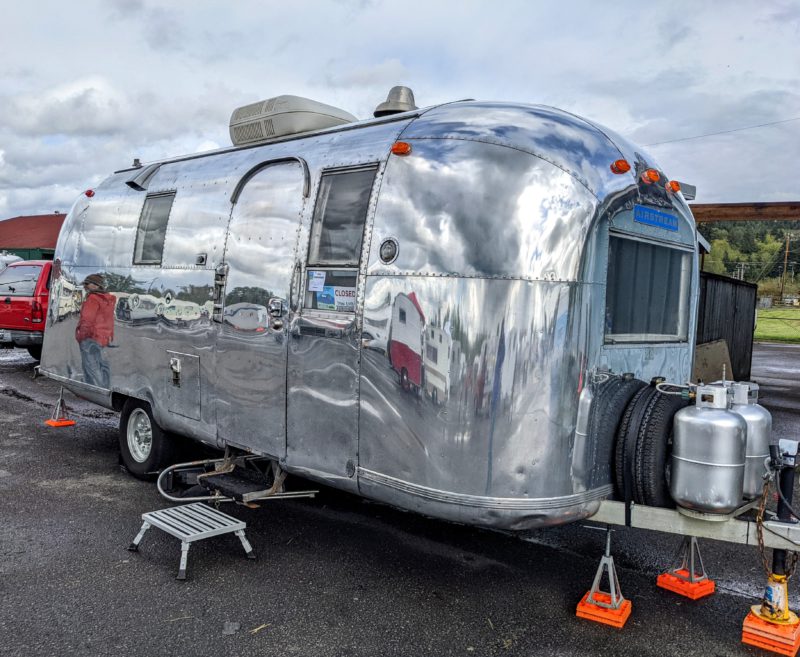
Pop-Up
These convertible trailers are a cross between a hard-sided camper and a tent. As the name implies, they expand to become an inside living space, often with sleeping areas hanging off the front and back, only to fold down again for more compact towing.
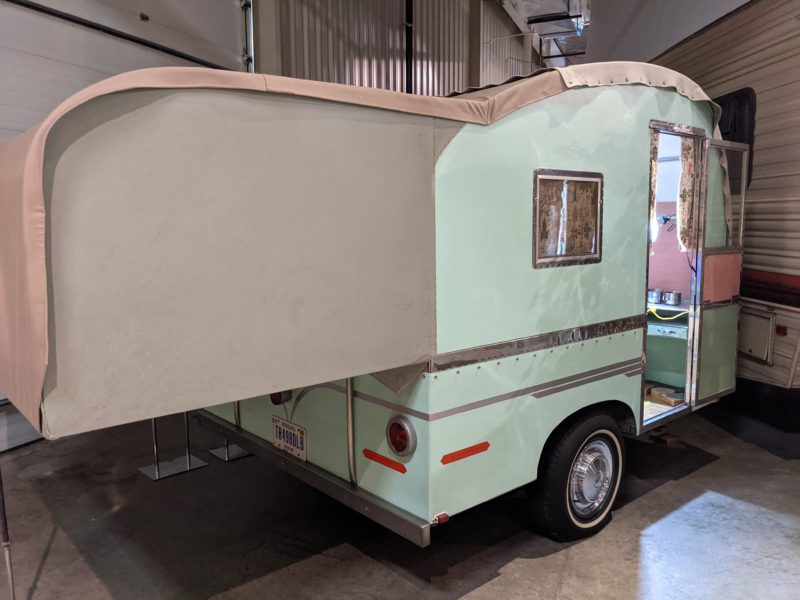
Inspiration for Your Vintage Camper Style
Not sure of your vintage camper style yet? No worries. (You just got started.) Here are a few great ways to get your vintage groove on, both in person and online.
Visit the Vintage Camper Museum in Elkhart
If you’re driving through northern Indiana, it’s worth stopping to tour this place as there is quite a bit of history here. They even have some good historical references in their library from trade journals going all the way back into the 1930s.
Attend Vintage Camper Rallies
Vintage Camper Trailer Magazine and Tin Can Tourists sponsor several rallies every year. Many of these events have an open house period for the public to come and tour.
Stay at a Vintage Camper Campground
Found all over the country, these unique campgrounds offer several private, fully-restored campers as “cabins,” all in one place. Book a weekend in one and tour some others to see what you might want in your own vintage rig.
Join a Vintage Club
Both in person and online, you can find brand-specific clubs — Tin Can Tourists, and Sisters on the Fly (for women only). Just type in what you are seeking into any search engine, and you’ll have a weekend of fun ahead of you!
Open Vintage Camper Trailer Magazine
Dedicated to this unique hobby, this bimonthly publication allows you to learn from the experts while perusing the various styles through the ages.
*****
It’s important to not think about these old trailers as fragile little “hot house flowers.” They were built well, with quality materials, and if you treat them well, there’s simply no stopping them. We’ve been all over this continent, and we’ve always enjoyed the comforts of our little home on wheels. Our Canned Ham — “Hamlet” — is celebrating his 68th birthday this year, but he’s not even thinking about retirement!
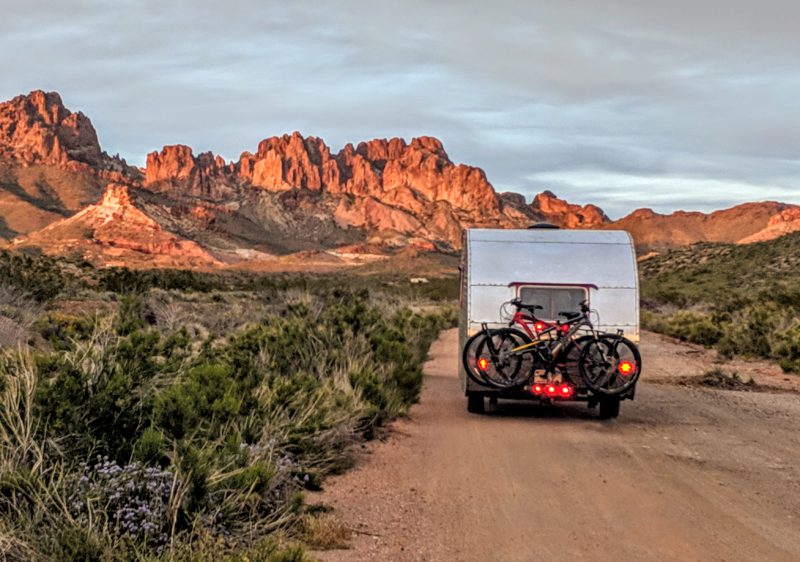
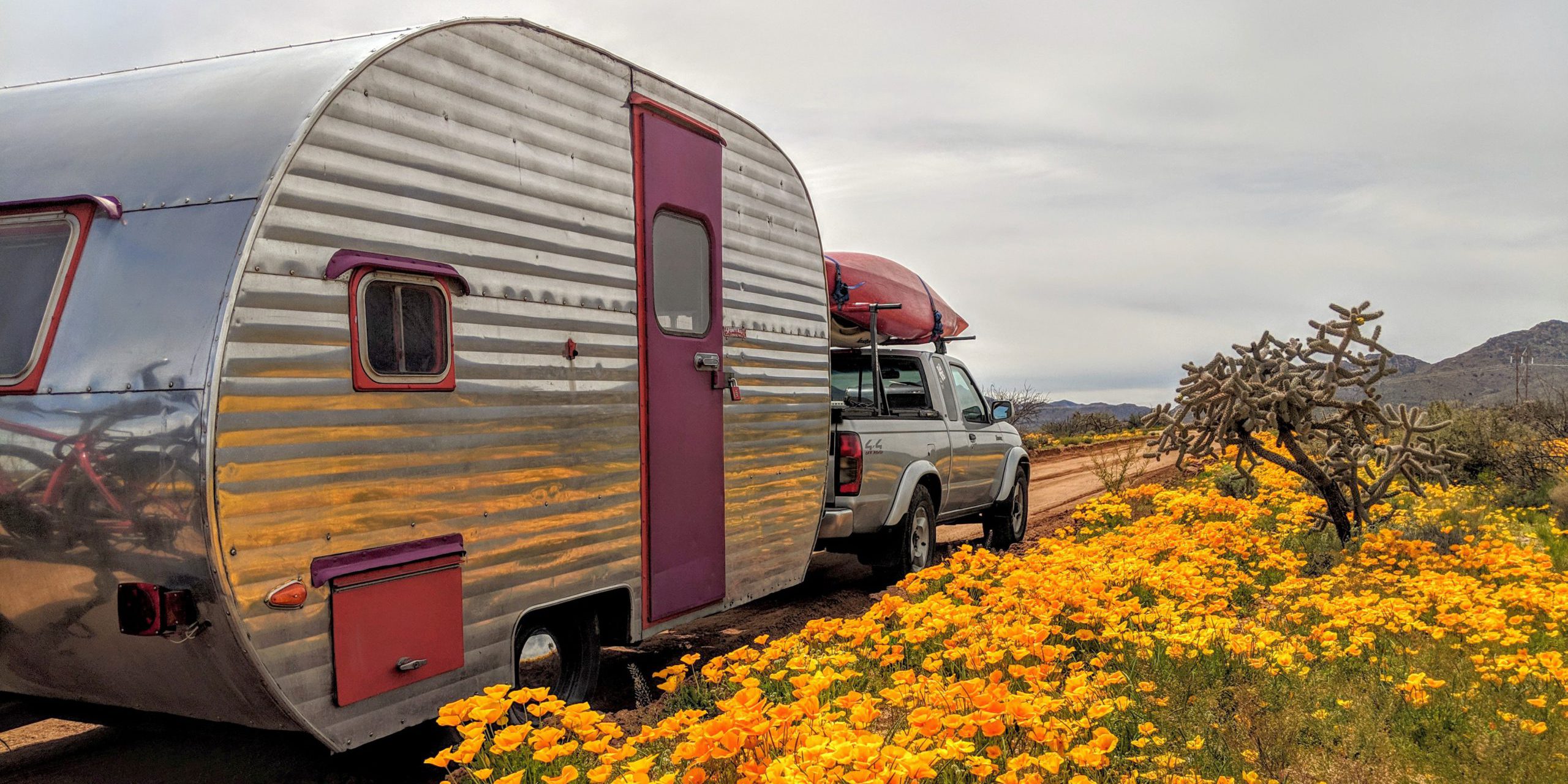
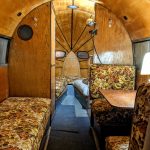
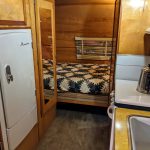


Leave a Reply